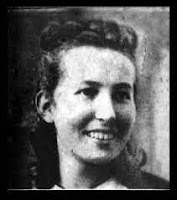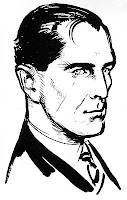Talkshow Thursday: Welcome Carolyn Miller!
Carolyn: Thanks so much for having me, Linda! The title for Midnight’s Budding Morrow came about as I am a fan of John Keats and enjoyed his poem ‘To Homer’ which includes this phrase. The three titles in the Regency Wallflowers series are all based on lines from this poem. For Midnight’s Budding Morrow I wanted to create a more Gothic Regency story, and this book explores some of the challenges of mental health, and how even in the depths of pain there is hope that is available. We might be suffering our midnight, but God promises that joy comes in the morning (Psalm 30:5)
LM: What draws you to the Regency time period? Is there some aspect of the era that most readers don’t know about?
Carolyn: I’ve enjoyed how the Regency era holds an almost mythical fantasy element, where we, as modern readers, ascribe all kinds of romantic notions of chivalry and gentlemanly behavior (thanks, Mr. Darcy) to a time period where people were much like us, but just wore prettier clothes and had to hide the truth behind politeness. And while I like creating stories about lords and ladies, in this new series I’ve enjoyed using more regular people and exploring some of the more challenging issues of the time, like how ailing soldiers managed life after war, financial issues, even laudanum addiction. I think readers can underestimate just how much the world was changing in the early 1800s, through war, medical and technological advances, political and social upheaval, and exploration of the world. There are many fascinating aspects to write about in this era.
LM: What sort of research did you have to do to ensure accuracy in this story?
 |
| Photo: Pixabay/ Jonathan Cannon |
LM: You’ve also written some contemporary novels. How was that different than penning historical fiction? The same?
Carolyn: The first books I ever wrote were contemporaries, and my new Original Six series is using (much rewritten and edited!) versions of some of my first stories, such as Love on Ice and Muskoka Blue. I love writing contemporary, these books are fun and funny yet still woven with faith threads, and the research is not nearly as demanding (ie I don’t have to research whether words were in use at the time!). I’ve found switching between the two genres works as a kind of mental palate cleanser and can see things more clearly in the Regency world after spending time with my hockey players and their sassy, strong heroines.
LM: What writers have most influenced your career?
Carolyn: It’s probably no surprise that I’m a fan of Jane Austen and Georgette Heyer (my first Regency, The Elusive Miss Ellison, came about as a challenge to blend Austen and Heyer’s wit and social observations with a strong faith component). Other authors I’ve been inspired by include Susan May Warren, Becky Wade and Carrie Turansky.
LM: What other projects are on the docket for you?
Carolyn: So many! This year I have another two books releasing in the Original Six series (Big Apple Atonement and Muskoka Blue), then there are another two books in the Independence Islands series (Rebuilding Hope and Refining Josie), then next year I have an Australian gold rush story releasing as part of a Barbour novella collection titled ‘Across the Shores.’ Plus I have some more hockey stories, the last Wallflowers book (Dawn’s Untrodden Green) and maybe a rom-com as well. Life is pretty busy!
LM: Where can folks find you on the web?
Carolyn: I’d love people to visit my website and sign up for my newsletter at http://www.carolynmillerauthor.com. I also post regularly at my author page on Facebook: https://www.facebook.com/CarolynMillerAuthor And Instagram https://www.instagram.com/carolynmillerauthor/
About Midnight's Budding Morrow:
Sarah Drayton is eager to spend time with her best friend at her crumbling Northumberland castle estate. Matrimony is the last thing on her mind and the last thing she expects to be faced with on a holiday. Yet she finds herself being inveigled into a marriage of convenience with her friend’s rakish brother.
When James Langley returns to his family’s estate, he can’t be bothered to pay attention to his responsibilities as the heir. War is raging and he wants only distraction, not serious tethers. But his roguish ways have backed him into a corner, and he has little choice but to obey his father’s stunning decree: marry before returning to war, or else. Suddenly he finds himself wedded to a clever and capable woman he does not love.
Sarah craves love and a place to belong, neither of which James offered before returning to the battlefront. Now, everyone around her thinks she married above her station, and they have no intention of rewarding her for such impertinence. It isn’t until her husband returns from war seemingly changed that she begins to hope they may find real happiness. But can she trust that this rake has truly reformed?
When tragedy strikes, this pair must learn to trust God and His plans. Will they be destroyed...or will they discover that even in the darkest depths of night, the morning still holds hope?
Pre-order link: http://www.amazon.com/dp/0825446546






















.jpg)
















